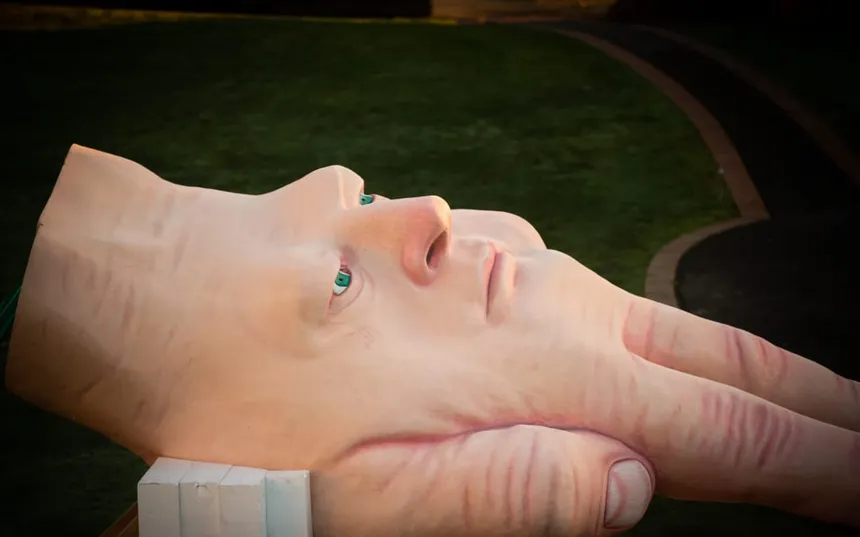As the giant sculpture of a hand, Quasi, prepares to leave its perch on the roof of Wellington’s City Gallery, the city is grappling with its mixed emotions. Perched high above the rooftop, the 16ft tall sculpture has loomed over the city for five years, eliciting a wide range of reactions from its residents. Some have found it disturbing, while others have grown to appreciate its unique presence.
Quasi, created by Australian sculptor Ronnie van Hout, features a human face with an unsmiling expression, which has led some to attribute a male gender to the sculpture. Named after Quasimodo, the bellringer in Victor Hugo’s classic novel “The Hunchback of Notre-Dame”, Quasi’s origins can be traced back to 2016 when it first appeared at an art gallery in Christchurch, New Zealand.
However, the sculpture’s polarizing nature led to intense debate, with some arguing that its placement was in poor taste. One local newspaper columnist even penned an opinion piece advocating for its removal, citing concerns that one of its outstretched fingers “appears to be inappropriately and belligerently pointing at pedestrians and office workers”. Van Hout responded by suggesting that the sculpture was simply seeking affection, and perhaps, a bit of love.

Wellington’s Controversial Sculpture Leaves City Divided as It Heads to Australia (Image via Getty)
Despite the initial backlash, Quasi has managed to grow on many Wellington residents over time. Ben McNulty, a city council member, who initially felt “devastated” by the sculpture’s departure, now considers himself part of a growing pro-Quasi group. Many others, including Anja Porthouse, who brought friends and family to see the sculpture, are “gutted” by its impending departure.
On Saturday, Quasi will be lifted from the roof by helicopter and transported to an undisclosed location in Australia, leaving many residents wondering about its uncertain fate. Meanwhile, the City Gallery has announced that it will be replaced with a new installation, much to the chagrin of those who have grown to appreciate Quasi’s unique presence on the Wellington skyline.


























